Formula E virtual tests: working with the dynamic driving simulator
Opportunities for real-world testing are severely limited in Formula E. That’s why, between the race events, Audi uses an ultra-advanced simulator to improve the performance of the Audi e-tron FE06.
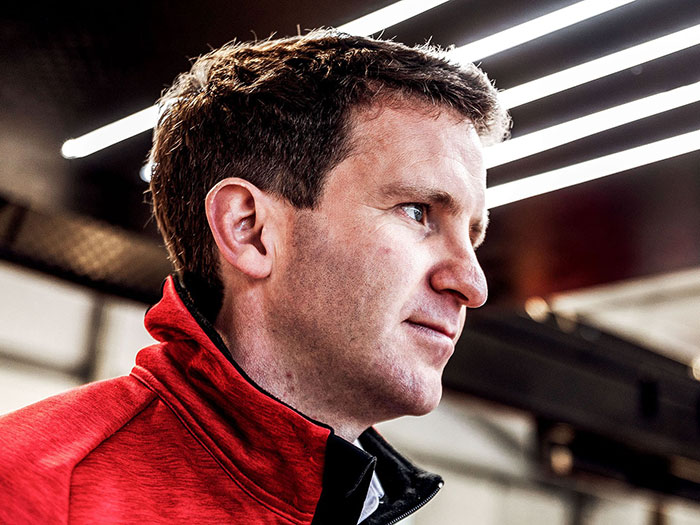
In Formula E, test days on the circuit are few and far between. For this reason, the dynamic driving simulator that Audi uses to develop its electric racing cars plays a crucial role. This high-tech system reproduces virtually the behaviour of the Audi e-tron FE06 in such a realistic way that for drivers it is exactly like racing on the track. “Simulation is one of our core tasks and is the most important tool for our drivers and technicians to prepare for the next race”, says Tristan Summerscale, Formula E project leader at Audi.
After every E-Prix, generally held on city circuits in metropolises such as Berlin, Paris or New York, the racing cars from all of the teams are loaded and transported together to the next venue: “Since the hardware of the vehicles cannot be changed during the season, we can only make our cars more competitive by improving our preparation, set-up and software”, adds Summerscale.
Suspension and tyres
The most important factors influencing the performance of Formula E cars are the suspension set-up, tyre performance and battery energy management. Whenever the Audi racing cars go out on the circuit – during practice, qualifying or races - every piece of information gets digitally recorded and evaluated in detail. “The key to data analysis is to exactly identify each weak point and use it to develop the right improvements”, says Summerscale.
The next steps take place in the dynamic driving simulator at the motorsport headquarters of Audi Sport in Neuburg an der Donau, near Ingolstadt. Besides the drivers, staff at the simulator sessions include operational engineers from Audi Sport, technicians from ABT Sportsline and, depending on the focus, also a specialist engineer from Audi. In addition, another engineer responsible for the operation of the simulator is always present.
How it is built
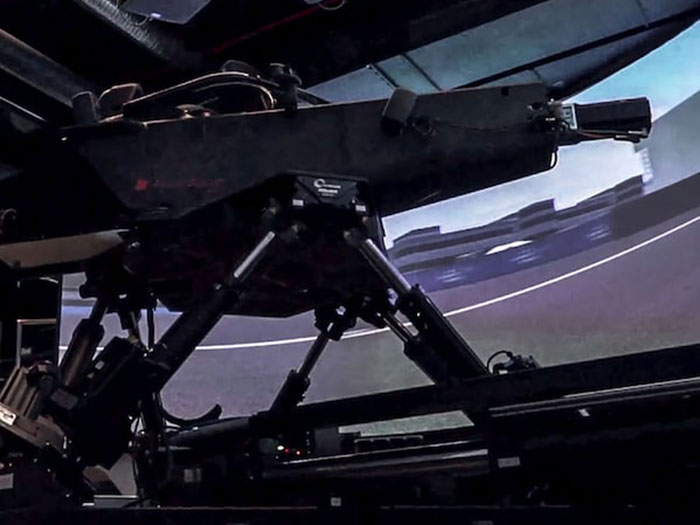
The drivers sit in a cockpit – derived from the racing car interior – installed on computer-controlled, three-dimensionally movable stilts. In turn, the stilts sit on top of a mobile platform that can be moved on three levels, with a total of nine degrees of freedom.
“In contrast to the static simulator, the movements of the vehicle are very realistic in the dynamic simulator”, explains Bastian Göttle, who is responsible for coordinating the driving simulator at Audi. The driver’s cell is exactly the same as the one found in the Audi e-tron FE06. The simulator has an active seat and active seatbelts, which accurately reproduce tensile and compressive forces generated while driving. The acceleration and deceleration can reach up to 3.5 times the forces of gravity, with the steering wheel, pedals and seat identical to the real racing car.
The circuit
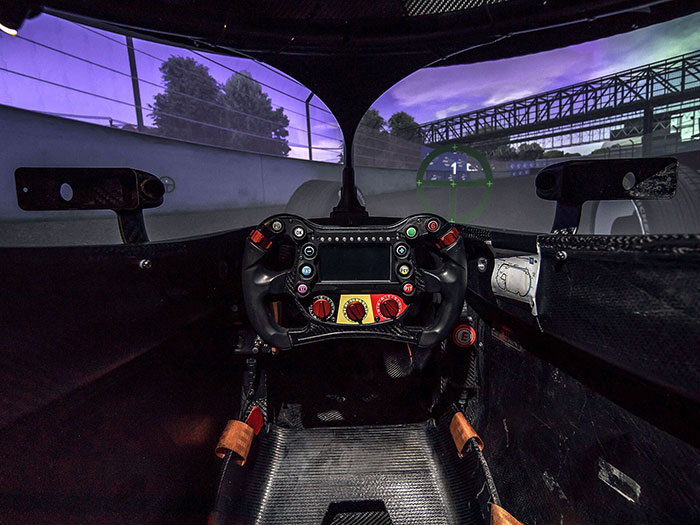
The virtual circuit is projected onto a 240-degree screen in front of the driver to reproduce the real thing, while speakers play the original sounds of the Formula E car. “Thanks to the optimized graphics, we are now even closer to reality”, says Audi driver Lucas di Grassi, the Formula E champion for the 2016/2017 season. Technicians follow all the action from monitors in the control room.
Preparation for the next race in the driving simulator begins with the follow-up to the previous one: “We enter the data of the chassis set-up that was actually used and the tarmac and air temperatures and let one of our drivers virtually complete the last race and the qualifying session”, says Summerscale. “If we then determine that there are deviations between the real circuit data and the existing simulation models, we update the system’s sub-models to bring them even closer to reality”. This makes the virtual work even more realistic, especially on circuits where the team has raced several times and has collected a large amount of real data.
Practice
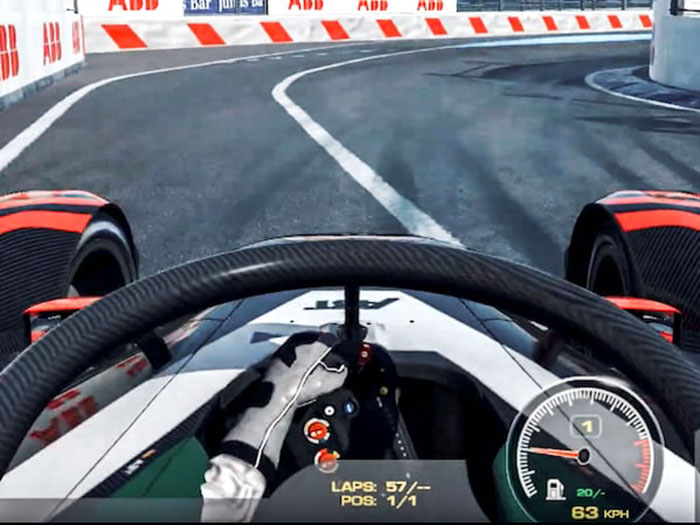
It is not uncommon in Formula E to race on circuits that are new or have undergone major layout changes. As FIA provides the virtual elevation and layout data to all of the teams, the simulator also helps in these situations, allowing drivers to get used to the track before every E-Prix. “The simulator saves me a lot of valuable time at the real venues on race days, when practice, qualifying and the races take place in quick succession”, says di Grassi.
Because all the vehicles use standardised aerodynamics, two other factors – as mentioned above – are of particular importance: the suspension set-up and the tyres. The best set-up is also chosen by using the simulator, which can run through all possible options for the configuration of components such as springs, dampers, stabilizers, and camber.
Strategies and energy management
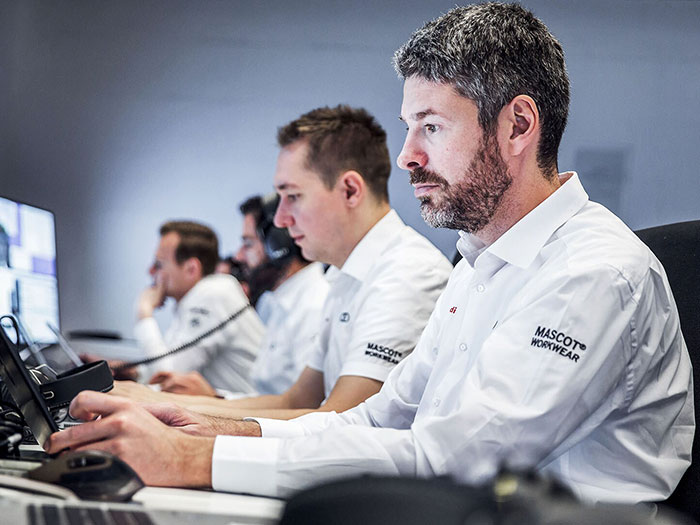
In race qualifying, each driver only has one lap to set the time that determines his position on the grid, so it’s crucial that tyres deliver maximum grip with pinpoint accuracy. The simulator can analyse in advance how the tyres – and therefore the racing car – will react to internal and external changes in temperature and pressure. These parameters fluctuate between driving on a straight and going through corners, determining the level of grip.
But the highest priority during the simulations is given to energy management. This is because it allows the team to draw up in advance of the race the best strategy to utilise the 52 kWh of energy stored in the Audi e-tron FE06’s lithium-ion battery, which has to last for the race’s specified distance (45 minutes plus one lap). Therefore, driving ability really is a crucial element in Formula E – something Lucas di Grassi knows very well. His mastery of the art of effective energy management has led to numerous victories for Audi.
Power
The drivers run through different scenarios in the simulator, partly because three different motor outputs are available during the various phases of the race: 200 kW (272 hp) for normal running, 235 kW (320 hp) in attack mode (the number and duration of these are different in each race) and 250 kW (340 hp) via FanBoost (a short power increase for the five drivers who receive the most votes from fans via the internet).
“Every single element of the 2,000-piece puzzle making up our racing car that has been optimised a little bit helps us to move forward. Each of the advances in the driving simulator makes a contribution to perhaps achieving the decisive tenth of a second in the end” concludes Summerscale.
Source: AUDI AG
